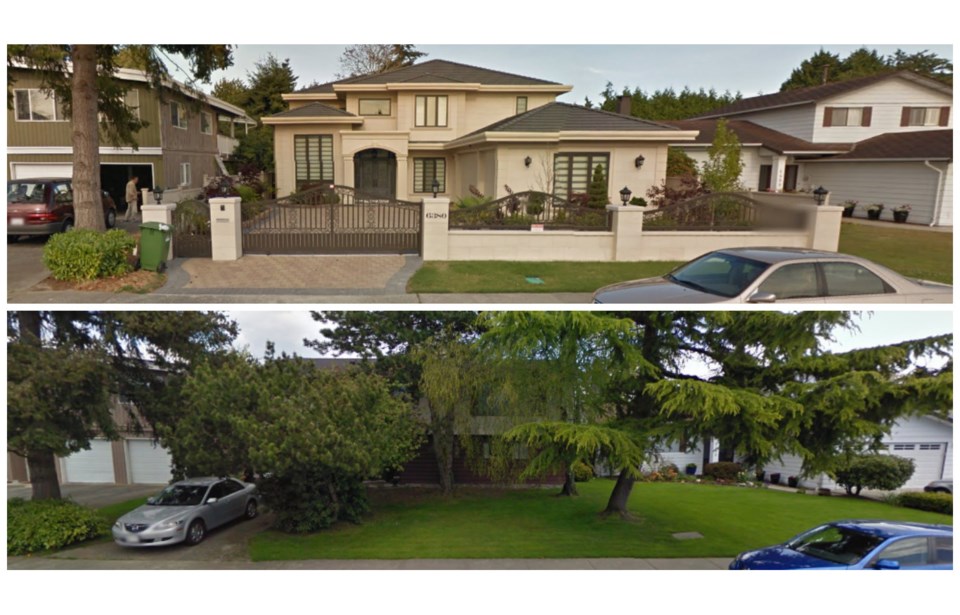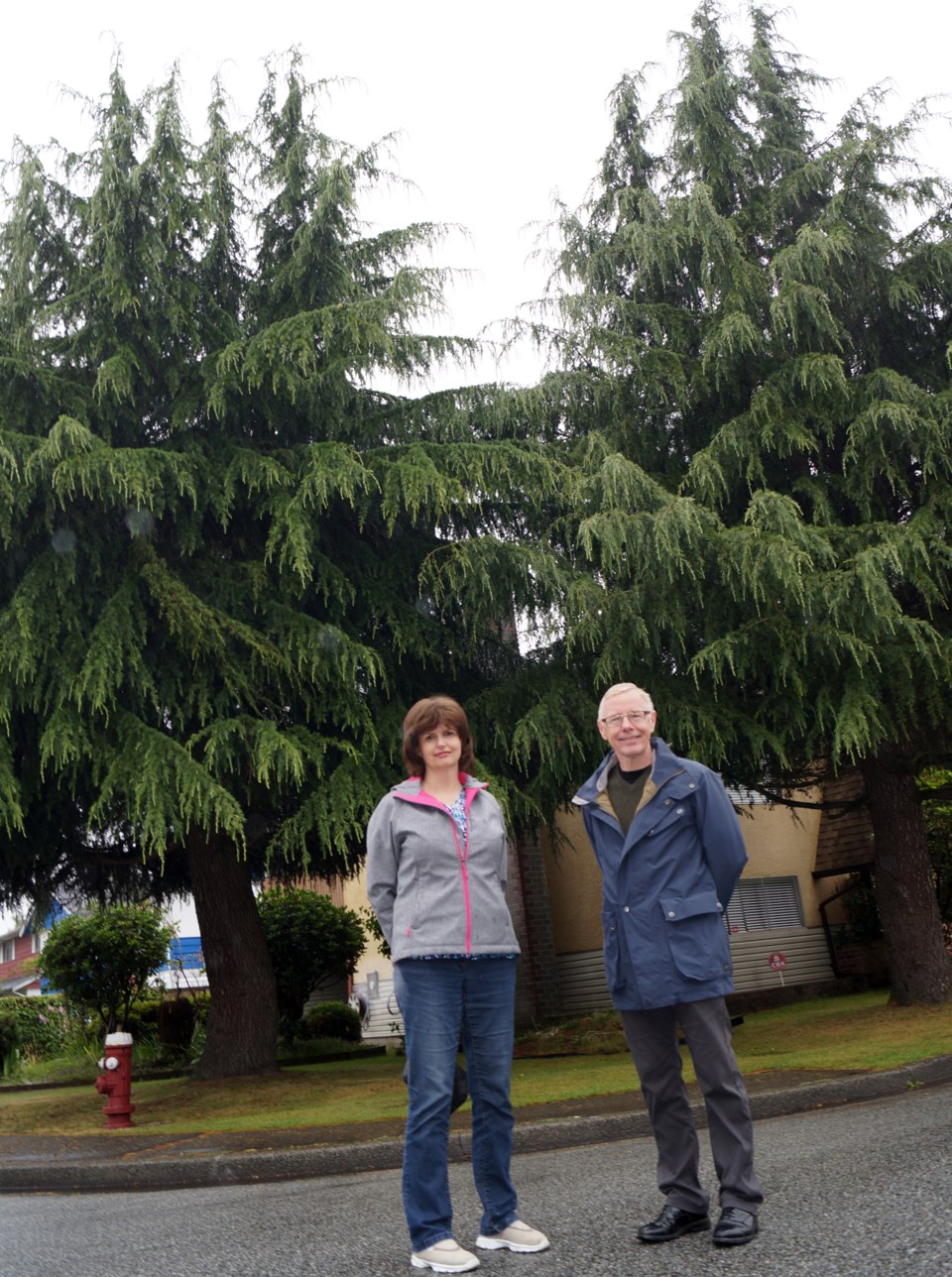A small but growing group of community activists, concerned about the loss of Richmond’s mature neighbourhood trees, has taken its efforts and concerns from the online realm to Richmond City Hall.
At city council’s planning committee meeting Tuesday, long-term residents Steve Guthrie and Cindy Lee laid out their plan to reform the City of Richmond’s tree protection bylaws, claiming the existing ones are ineffective in light of record levels of residential redevelopment.
“Construction preferences should no longer take priority over trees,” said Guthrie.
“What is occurring with mature tree cutting is in direct contradiction to the Official Community Plan,” said Lee.
The pair has no professional or educational background in arboriculture, but have researched tree protection efforts elsewhere. They’ve documented mature tree destruction in residential neighbourhoods over the past year, via the Facebook group Save Richmond Trees. They noted Richmond has lost more than 8,000 mature trees in the past five years.
The two put forth a six-point plan.
Among the issues is building setbacks from property lines, and the size of new homes being built. Most trees and green space are being lost due to Richmond’s generous backyard setbacks, said Guthrie.
At issue is how an older home is demolished, along with its trees (usually 40-60 years-old), and a new home with large driveways, a three-car garage and maximum square-footage, toward the back, is built.
Home structures tend to trump tree protection under the city’s bylaws, although mitigation efforts (such as realigning a home’s footprint) are taken when possible, according to city staff.
Guthrie used two images — one of a 1970s Westwind neighbourhood, with mature trees, and the other of a 1990s Broadmoor subdivision, with no street trees — to exemplify what the city should be aiming for and what it should be avoiding.

More detailed concerns include the construction of brick or concrete walls and gates on properties. These structures, along with garages and driveways, suffocate otherwise protected, healthy tree roots.
Furthermore, the group is concerned big trees are being replaced by smaller ones.
In one example, using Google Street View, the pair showed councillors how two big evergreen trees were taken down and replaced by ornamental maple trees.
Richmond’s Deputy CAO Joe Erceg told councillors and the delegation that the city replanted 990 new trees in the city in 2015.
But at issue is where trees are being replanted (bunched into parks, meaning tree canopies are degraded in neighbourhoods).
“In some cases the location of trees conflicts with a new building,” said Erceg, adding in other cases replacement trees may be smaller because survival rates are better.Erceg said “there’s a lot of work being done and there’s probably more that can be done.”
Guthrie called the response a “classic PR response.”
The city is legislated to increase its flood protection levels. Thus, during redevelopment, land must be raised, suffocating roots in the process.
Guthrie said the city needs to increase efforts to save trees (such as carving out tree wells, and sloping grade elevations).
Lee is calling on council to increase the staffing levels of the tree protection department. Presently, there are only three members to “police” the city. Notably, 2016 is on pace for a record number of home demolitions, with 232 to May 31.
The pair noted the benefits of trees, such as filtering pollutants, absorbing storm water runoff and sequestering carbon emissions.
The city is presently reviewing yard setbacks and green space coverage of residential lots.
Coun. Bill McNulty asked for a review of the bylaws and referred the presentation to staff.



